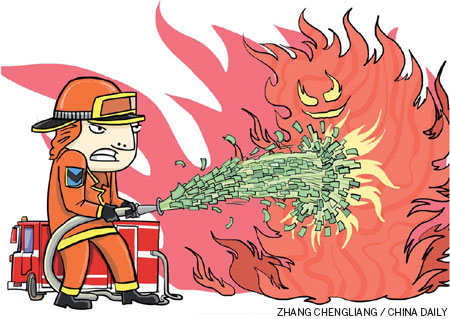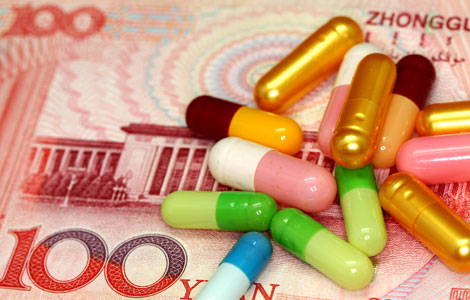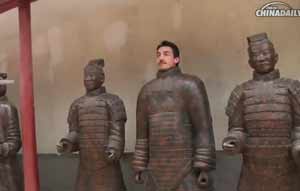More paper is not the answer
Updated: 2013-03-08 08:54
By Giles Chance (China Daily)
|
|||||||||||

Quantitative easing has clearly failed, so there is no reason to keep on pumping cash into the economies of the developed world
Since 2008 and the great financial crash in the West, China, a fast-growing emerging country with the world's largest pool of savings, has been pushed into a central place as a result of the economic weakness of most of the developed or G7 countries.
The fact that in 2012 China overtook the United States to become the world's largest trader of goods underlines that, no matter how much China's domestic demand expands, China's economic fortunes remain closely linked to the other major global economies.
If they become seriously ill, then China will catch a cold, or worse. Today, China is carefully watching the attempts of the G7 and other developed economies to overcome their economic problems, in order to prepare for new economic shocks should they occur. Will the policy of easy money, or quantitative easing, which is being followed in the US, Europe and now in Japan, work? If QE fails, and the G7 falls back into economic recession, what can China do?
Introduced in 2009, first in the US and then in Europe as an emergency measure aimed at providing an injection of monetary rocket fuel measured in months rather than years, the QE medicine has proved inadequate to fix the economic imbalances uncovered by the Western financial crash of 2008. Today more than four years after the crash, the developed world, from Japan to the US and Europe, is still stuck in no-growth mode.
Now a discussion has started in the US and in Britain about a new, stronger kind of QE, called "helicopter money", which would inject money directly into the economy via government funding of public works.
This money would not be paid for by taxation, but by pure money-printing, which would be a claim on the state by way of the central bank's balance sheet. In the same way as a drug addict needs increasingly large doses of heroin to maintain the same level of elevation, it seems now that QE has to be regularly boosted just to prevent Western economies from slipping back into recession.
Has QE become a permanent feature of Western economic life?
The G7 countries have not learned the lesson from the many previous financial crises caused by excessive debt, from Latin America in the 1980s to Scandinavia and East Asia in the 1990s. The lesson is that recovery from a financial crash depends on recognizing bad debt, writing them off and restructuring the economy, especially financial institutions, as well as cost-cutting and boosting growth via public investment.
In 1998 and 1999 Asian countries such as South Korea, Thailand and Indonesia were not independent or strong enough to resist the painful economic restructuring forced on them by Western institutions led by the International Monetary Fund. But although the IMF in 1998 acted harshly, it administered the correct medicine. The result today is that East Asian economies, Japan apart, recovered years ago from the Asian crisis of 1997, and are financially strong and growing.
But since 2008 the G7 has not taken its own medicine. The major developed countries are able to ignore hard lessons from the past because they still control the global economic system and its main institutions. The IMF, led by a former French minister and controlled ultimately by the US, is not in a position to force G7 economies into adopting the painful but necessary measures that would put senior bankers out of work and cut G7 living standards.
Many of the Western banks that caused the crash have not been restructured, and many bad loans remain, particularly in Europe. The banks that were "too big to fail" in 2008 have since become even bigger, and economic restructuring has been slow or non-existent.
If in 1998 any country in East Asia had suggested printing money as a recovery strategy from the financial crisis, it would have been laughed at by the West. How is it, then, that even in 2013, after four years of money-printing, the G7 can continue to ignore its own prescription and put so much faith in quantitative easing - also known as money-printing?
Recently, senior central bankers have started to question the reliance on money-printing as a way of dealing with the problems faced by stagnant Western economies. Mervyn King, governor of the Bank of England, recently issued a public warning to George Osborne, the British finance minister, that monetary policy had reached its limits and other ways had to be found to set the British economy on the road to recovery. A book written by Adam Fergusson in 1975, When Money Dies, describes how the German economy was destroyed in the 1920s by the loose money policy pursued by the German central bank, the result of the huge debts that Germany incurred during World War I. It reminds us of the risks that the developed world is running with QE.
The IMF now projects that this year, the G7 countries will have an economic growth of 1.5 percent, average unemployment of 7.5 percent and gross government debt of 129 percent of GDP.
The US, the lynchpin of the global financial system, will have net government borrowing of 7.3 percent of GDP. With Germany and France both reporting negative growth for the last quarter of 2012 and with the euro economy set to shrink further this year, the IMF's 1.5 percent growth estimate for the G7 will probably turn out to be too high.
The deficit-cutting battle that has raged in the US Congress since last year highlights the basic fact that the most likely escape from the enormous debt carried by major developed countries is through inflation. The IMF's projection of a small rise in inflation to 1.6 percent for the G7 countries by the end of this year may seem low, but this is a measure of the inflation of consumer prices, not of asset prices.
Since late last year, the flow of printed money out of "safe" government debt and cash into assets has pushed stock prices more than 10 percent higher - a desirable outcome for the supporters of QE, but a worrying sign for those who see in QE a potentially life-threatening weapon.
The inability of G7 countries to come to terms with the fact that they are much poorer than they thought makes another financial crash increasingly likely.
This is a very serious matter for China and other emerging countries, which have a collective GDP growth rate projected by the IMF of 5.6 percent this year and an overall ratio of gross debt to GDP of only 33 percent. China looks to be in a strong enough position not just to withstand another G7 financial collapse, but even to turn the tables and become the savior of the developed world.
China may have to consider the terms on which the developing world, led by itself and the other BRICS countries, would consider a financial bailout of the major developed countries. The conditions set by the Western-backed IMF in 1997 and 1998 for the rescue of the collapsed Asian economies give a good guide: slashed government spending, huge debt write-offs, currencies depreciated to competitive levels, restructured financial institutions, with a clean-out of old management both at banks and in governments, and deep economic restructuring.
The Western response to sharp reductions in welfare spending, the main component of bloated Western government budgets, might be for large numbers of people to take to the streets in protest - a much larger version of the protests against government spending cuts that we have seen in Greece, Spain and Portugal recently. Certainly, it would produce substantial social upheaval in multi-ethnic, multicultural societies like the US, Britain and France. With unemployment of 8 percent in the UK and the US, 10 percent in France and 11 percent in Italy, such social disruption seems an inevitable consequence of a breakdown in welfare funding.
Quantitative easing has failed. The financial crisis is not over, and will probably return to strike again, in a more virulent form than before. The economic links between China and the G7 mean that survival for China means finding ways to help the developed world recover. This time, the emerging economies should take a stronger position than they did the last time they were called on for emergency financial and economic assistance by the developed world in 2008 and 2009.
This time China must insist that the Western economies take the bad-tasting medicine of thorough economic and financial restructuring, which, history tells us, will lead eventually to recovery and full economic health.
The author is a visiting professor at Guanghua School of Management, Peking University. The views do not necessarily reflect those of China Daily. Contact the writer at gileschance@gsm.pku.edu.cn.
(China Daily 03/08/2013 page9)
Today's Top News
List of approved GM food clarified
ID checks for express deliveries in Guangdong
Govt to expand elderly care
University asks freshmen to sign suicide disclaimer
Tibet gears up for new climbing season
Media asked to promote Sino-Indian ties
Shots fired at Washington Navy Yard
Minimum growth rate set at 7%
Hot Topics
Lunar probe , China growth forecasts, Emission rules get tougher, China seen through 'colored lens', International board,
Editor's Picks

|

|

|

|

|

|





